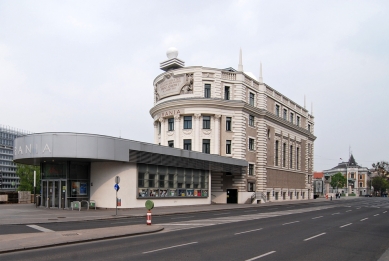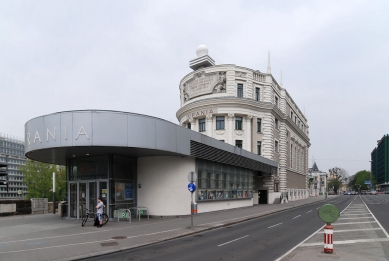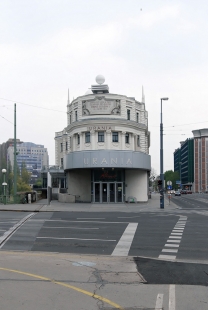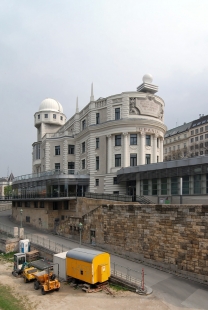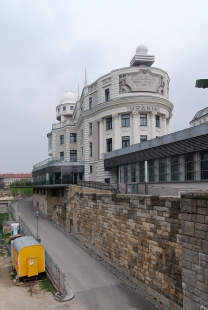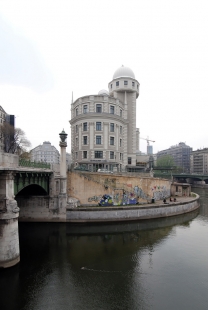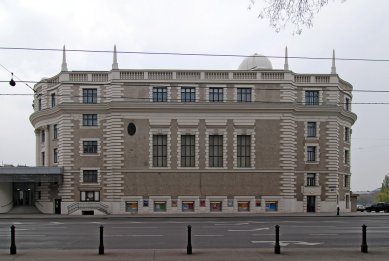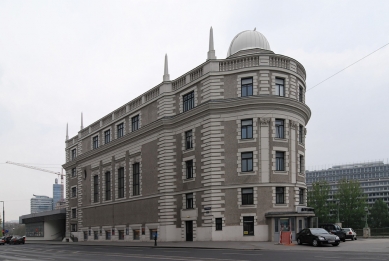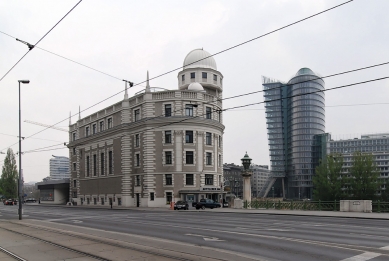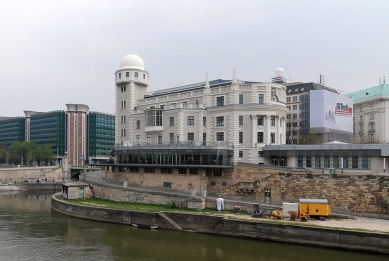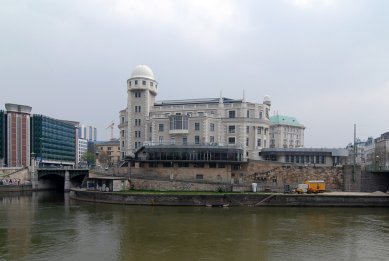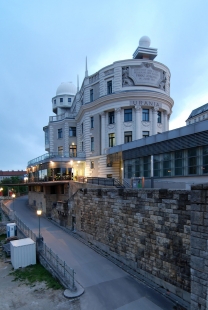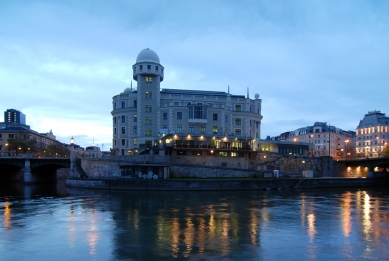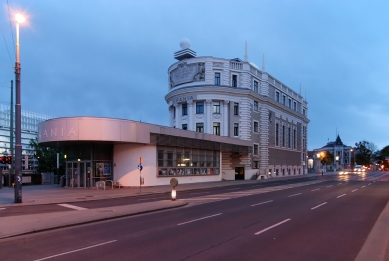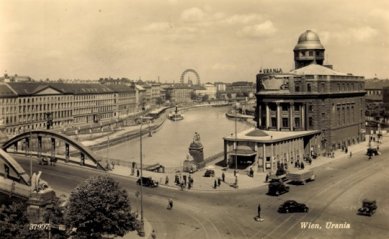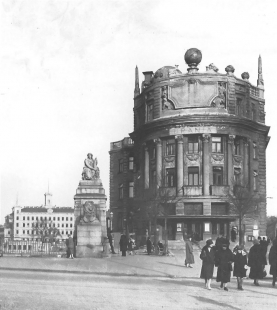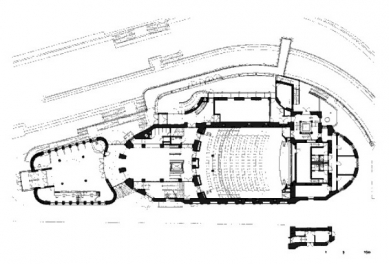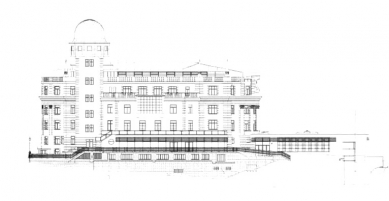 |
Inspired by the Berlin Urania from 1888, an educational astronomical society was also founded in Vienna with several years of delay, which relocated from Prater to a new building on the banks of the Danube Canal in 1910. The ceremonial opening of the house with a public observatory was taken over by Emperor Franz Joseph I. Surprisingly, the historicizing form of Urania was designed by the Art Nouveau architect Max Fabiani, who became famous in Vienna for buildings such as Portoix&Fix and Artaria, rightly classified as part of the emerging modernity. Due to the Baroque shapes of both corners, the building began to be nicknamed "baroccus fabiensis." Regardless of the historicizing facade (Fabiani also reconstructed the Konopiště Castle two years later), the building perfectly fulfilled its educational mission. Inside, besides the 36-meter-high observatory, there were also lecture rooms, a library, offices, and a café located in a light annex on the northern facade with a direct view of the canal. In 1935, a ticket office was added by Otto Schottenberger and Adolf Kautzki. During World War II, the building was significantly damaged, and the observatory was completely destroyed. Repairs waited until 1957, but a major reconstruction was not completed until 1994-2003 by Holzbauer's collaborator Dimitris Manikas. Currently, the building primarily serves as a puppet theater with an attendance of up to 1,500 people.
The English translation is powered by AI tool. Switch to Czech to view the original text source.





